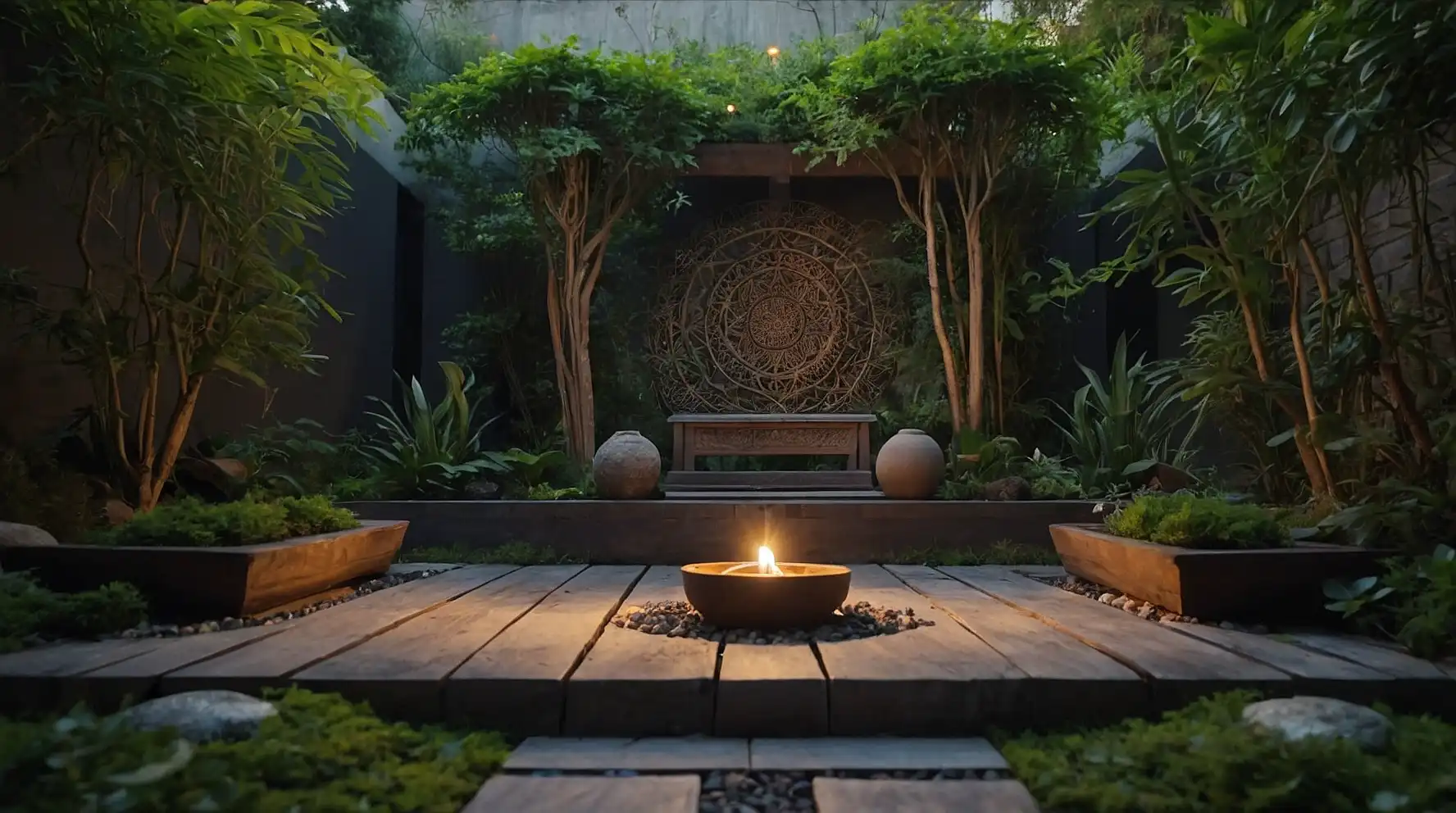27 Best Spiritual Garden Ideas to Transform Your Meditation Space
Creating a spiritual garden provides you with a sacred outdoor space for meditation, reflection, and inner peace.
Your garden can become a sanctuary that nurtures both your plants and your spirit.
In today’s busy world, having a designated area for mindfulness practices helps you disconnect from digital distractions and reconnect with nature.
Even small spaces can transform into powerful meditation gardens with the right elements.
Ready to create your own spiritual oasis? These 27 ideas will help you design a garden that speaks to your soul and enhances your meditation practice.
1: Japanese Zen Rock Garden
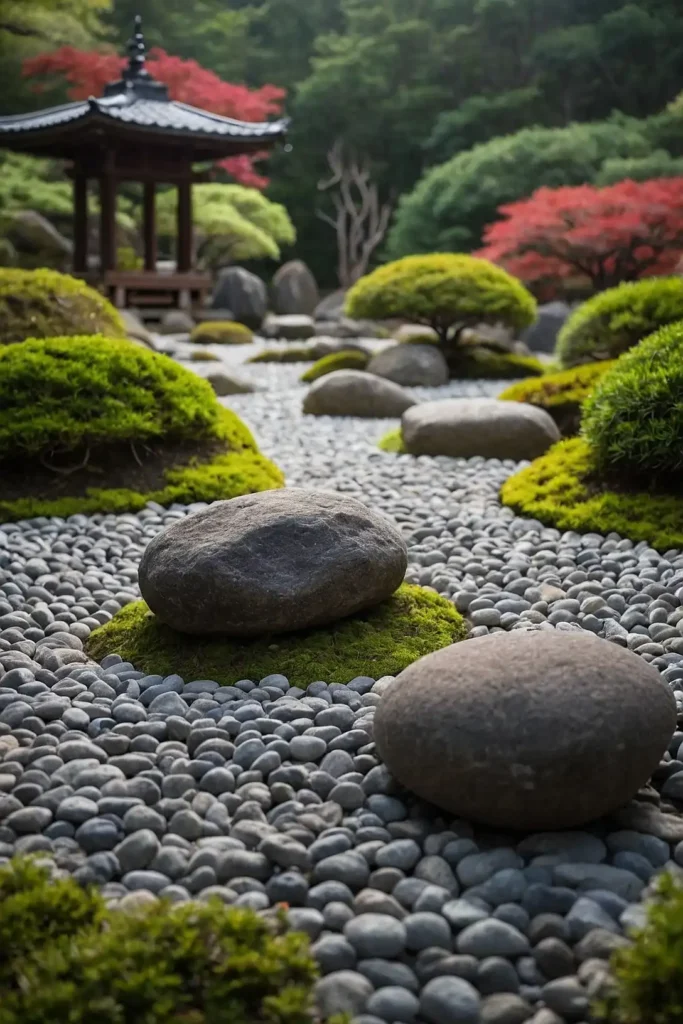
A minimalist rock garden channels simplicity and mindfulness. Arrange different-sized stones in a bed of raked sand or fine gravel to represent islands in a sea.
The repetitive act of raking patterns in the sand becomes a meditation practice itself.
This low-maintenance option works well in dry climates or small spaces where you want to create a focal point for contemplation.
2: Buddha Statue Focal Point
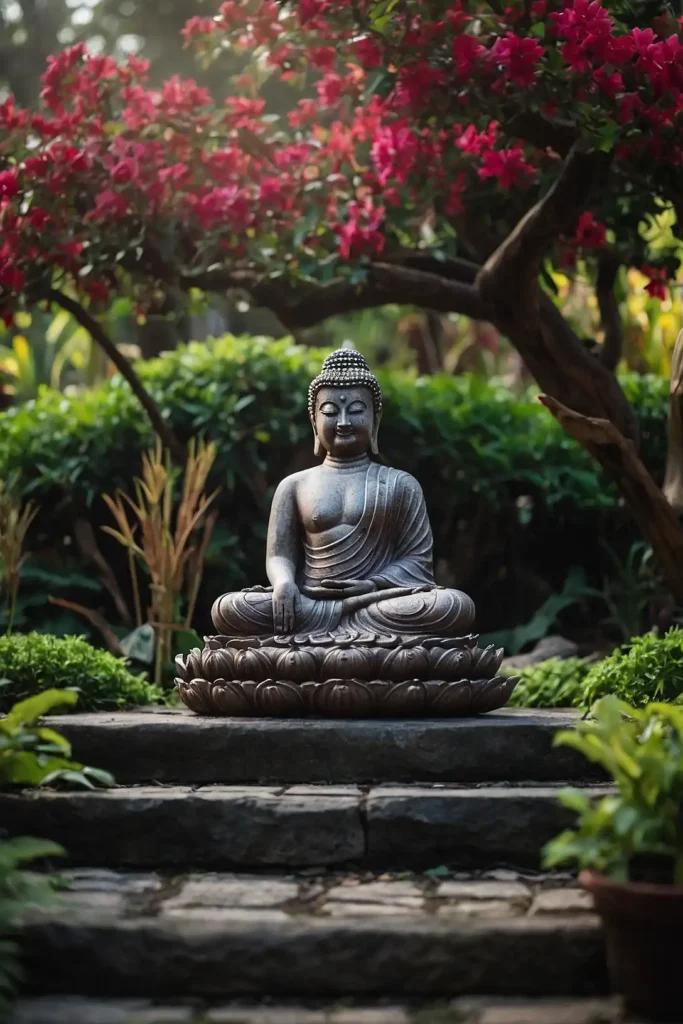
Place a Buddha statue as your garden’s centerpiece to remind you of your spiritual practice.
Choose a statue that resonates with your personal connection to meditation.
Position it facing east (traditionally toward the rising sun) or toward your main seating area.
Surround it with simple plantings that won’t overshadow its presence but complement its peaceful energy.
3: Water Feature for Tranquility
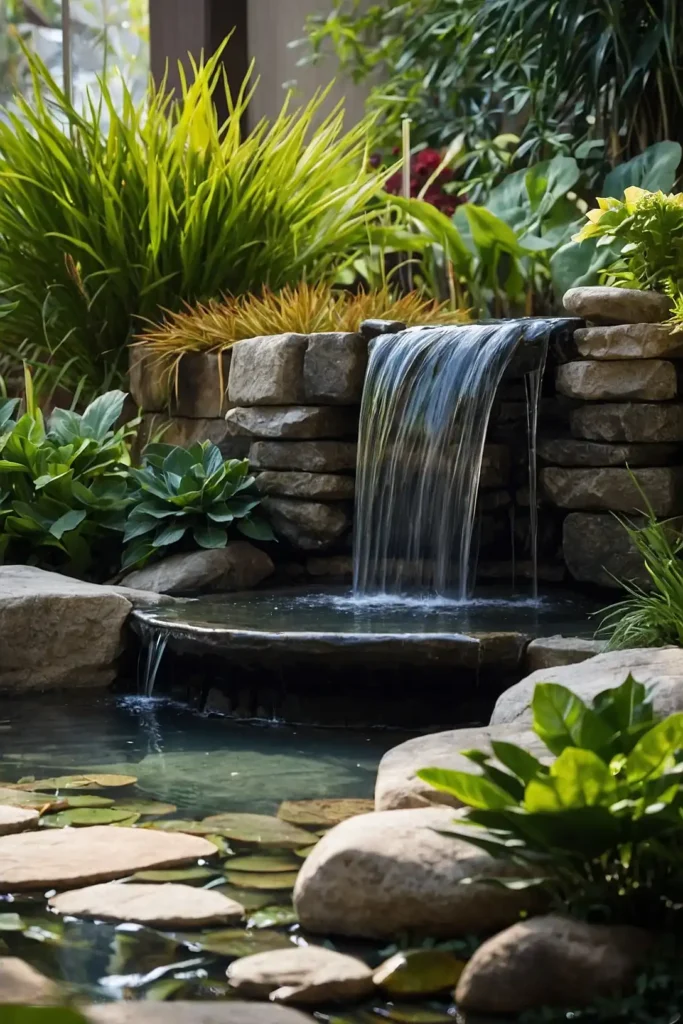
Install a small fountain, pond, or water bowl to bring the soothing sounds of water into your garden.
The gentle bubbling creates white noise that masks urban sounds and helps you focus inward.
Water features also attract birds and beneficial insects, bringing more life to your space.
Even a simple ceramic bowl filled with water and floating flowers can serve as a powerful meditation focal point.
4: Meditation Labyrinth Path
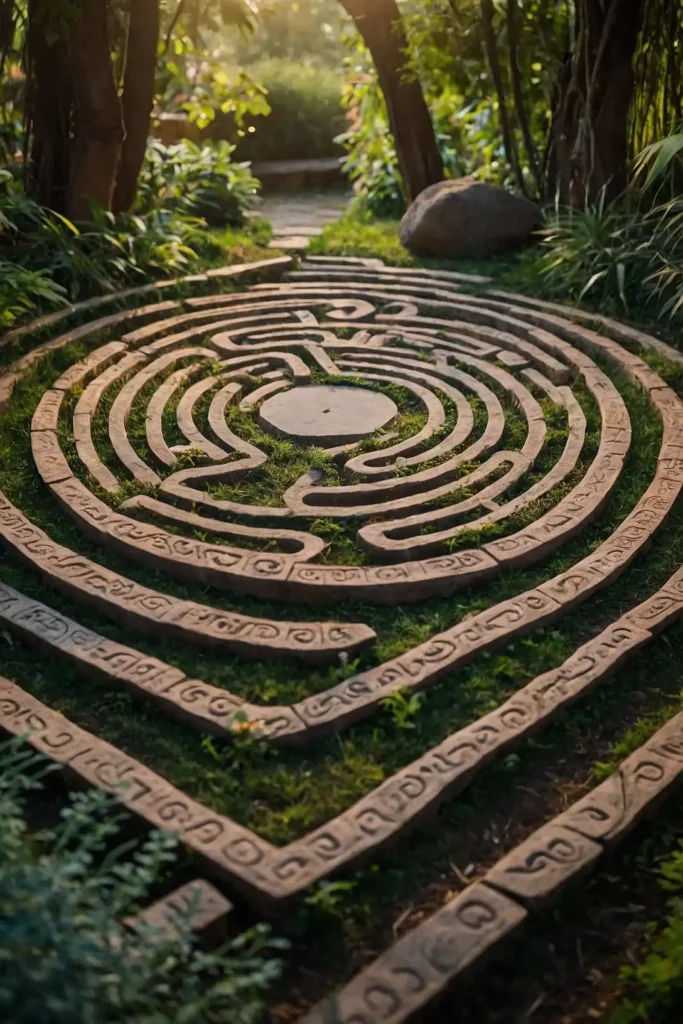
Create a walking meditation path in the form of a labyrinth using stones, bricks, or plants as borders.
Unlike a maze, a labyrinth has no dead ends—just a single winding path to the center and back out.
Walking the labyrinth becomes a moving meditation as you follow its curves and turns.
Scale it to your space, from tiny desktop versions to full garden-sized installations that you can walk.
5: Prayer Flags for Intention Setting
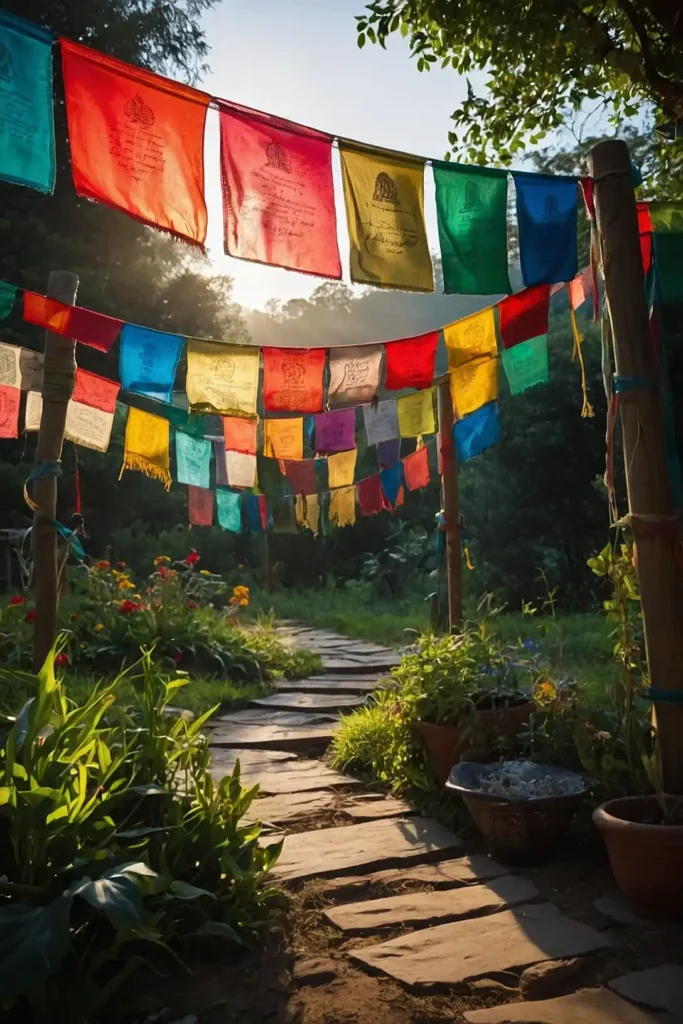
Hang colorful Tibetan prayer flags to add movement, color, and intention to your garden.
Traditional flags feature prayers that are believed to spread goodwill as the wind blows through them.
Create your own by writing intentions or mantras on fabric strips.
Position them where they’ll catch the breeze but won’t overwhelm the peaceful atmosphere you’re creating.
6: Stone Cairns for Balance
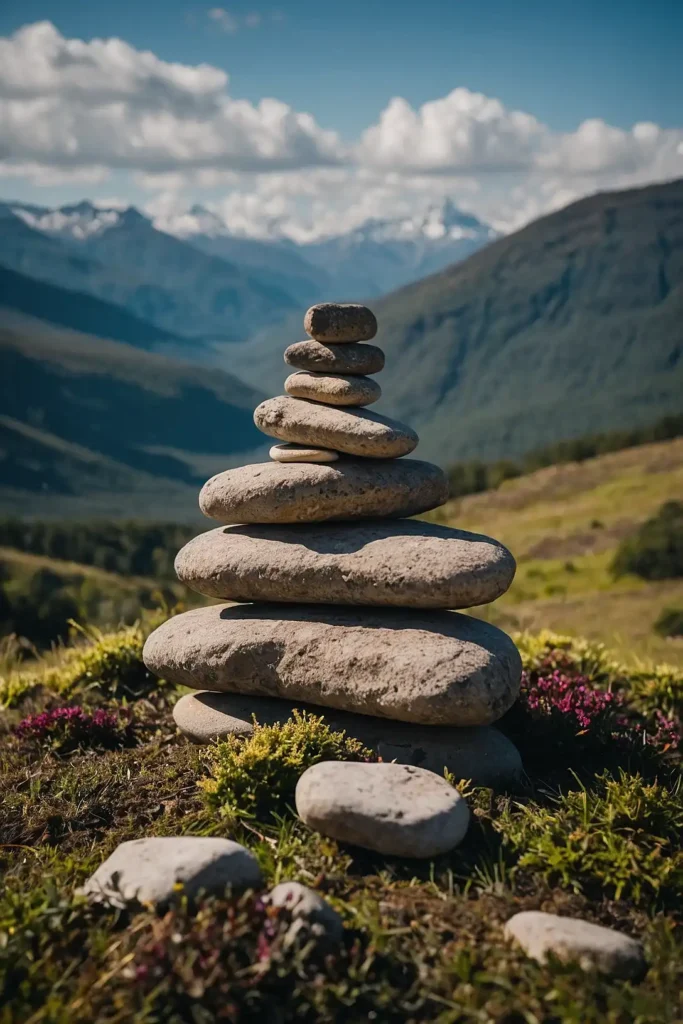
Build small stone towers or cairns to represent balance and patience in your garden.
Select flat stones of decreasing size and stack them carefully, focusing on finding each stone’s center of gravity.
The practice of creating cairns teaches mindfulness and presence.
Place them at entrance points or along meditation paths as reminders to maintain balance in your life.
7: Wind Chimes for Sound Therapy
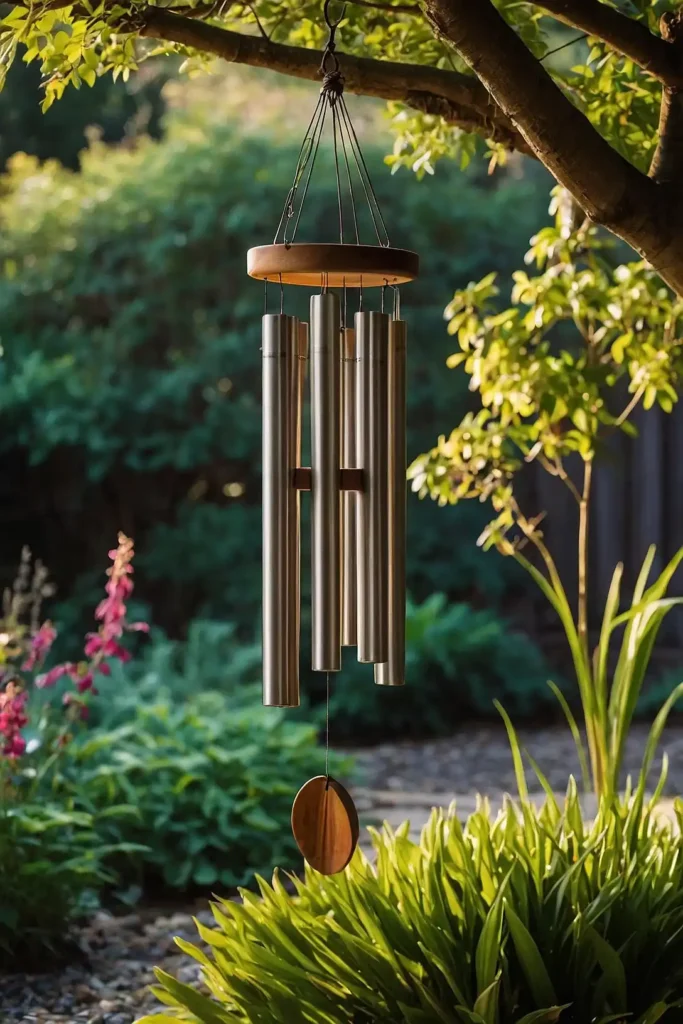
Hang wind chimes to add gentle acoustic elements to your meditation space.
Different materials produce different tones—choose metal for clear, lingering sounds or bamboo for softer, hollow notes.
Position them where they’ll catch light breezes but won’t become overwhelming during windy days.
The random patterns of sound help prevent your mind from getting caught in repetitive thought loops.
8: Aromatherapy Garden Section
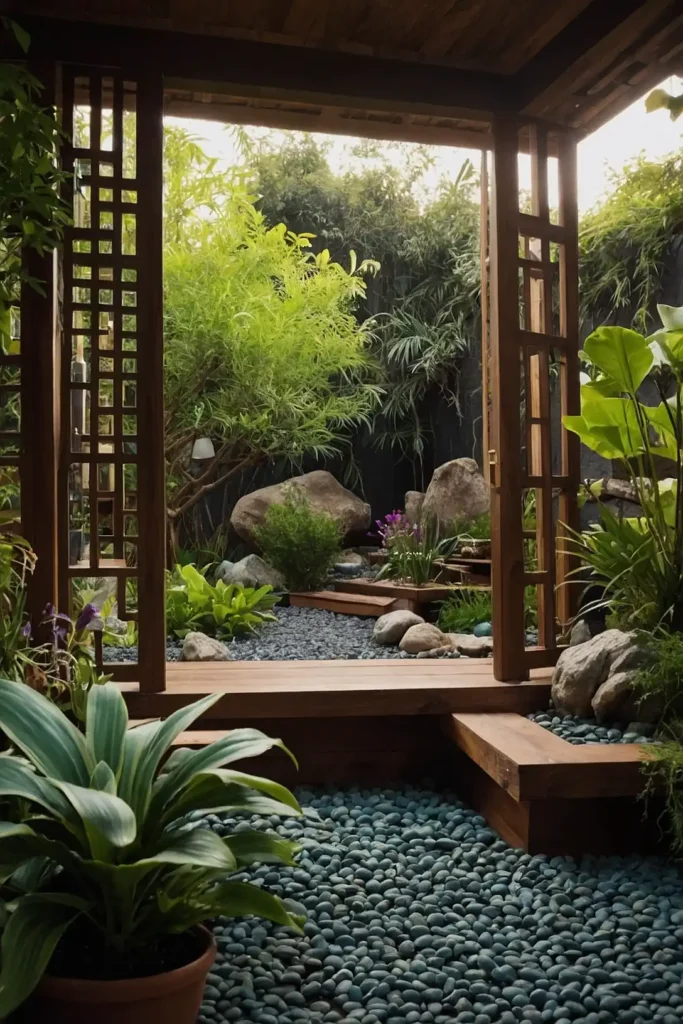
Dedicate a section of your garden to fragrant plants that enhance meditation.
Lavender promotes relaxation, rosemary improves focus, and jasmine uplifts your mood.
Plant them near seating areas or along paths where you’ll brush against them, releasing their essential oils.
The changing scents throughout the seasons will keep your meditation practice fresh and engaging.
9: Personal Altar Space

Create a small altar where you can place meaningful objects, set intentions, or make offerings. Use a flat stone, small table, or repurposed structure as your base.
Keep it simple yet personal with items that hold spiritual significance for you.
Your altar might include candles, crystals, written intentions, or natural objects you’ve collected that spark joy or reverence.
10: Sacred Geometry Patterns

Incorporate sacred geometry into your garden design through plant arrangements, paving patterns, or art installations.
Circles represent unity, spirals symbolize growth, and the flower of life pattern reflects interconnection.
These ancient patterns speak to our subconscious and create visual harmony.
Even simple geometric shapes can transform an ordinary garden into a space that feels intentionally designed for spiritual practice.
11: Moon Garden for Evening Meditation
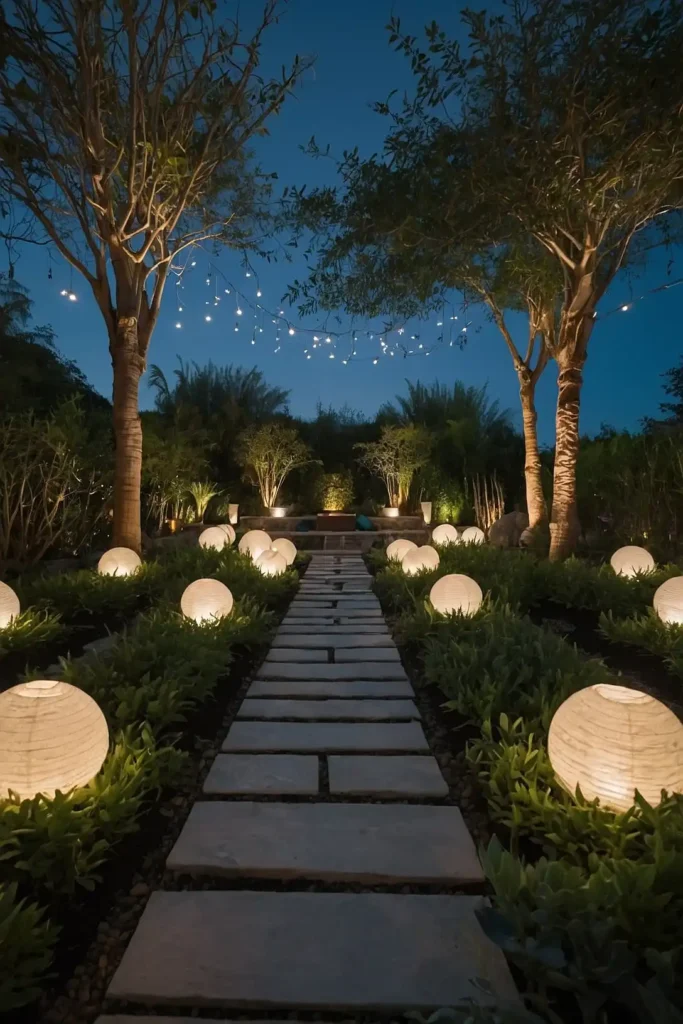
Plant white flowers and silver-leaved plants that reflect moonlight for a garden that comes alive during evening meditation sessions.
Moonflowers, white roses, and dusty miller create a magical nighttime atmosphere.
Add solar lights that charge during the day and gently illuminate your space at night.
The moon garden encourages you to connect with lunar cycles and the quieter energy of nighttime reflection.
12: Mindfulness Bell or Gong
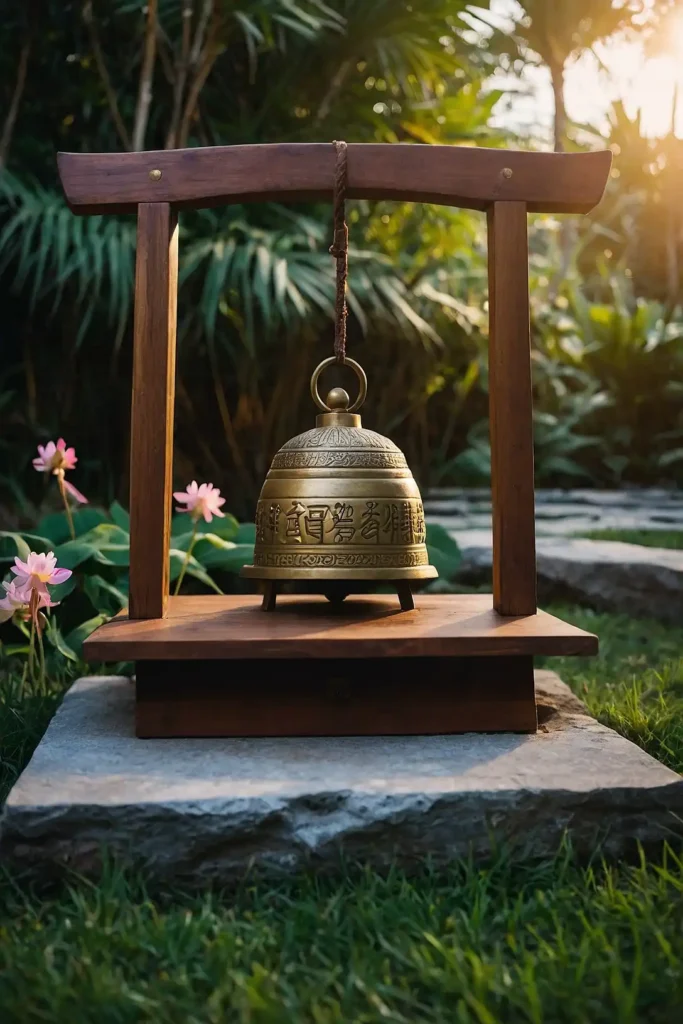
Install a garden bell, gong, or singing bowl as both decoration and meditation tool.
Use it to mark the beginning and end of your practice or as a mindfulness reminder throughout the day.
Choose one with a tone that resonates with you personally.
The sound creates a boundary between ordinary time and sacred time, helping you transition into a meditative state more easily.
13: Comfortable Meditation Seat
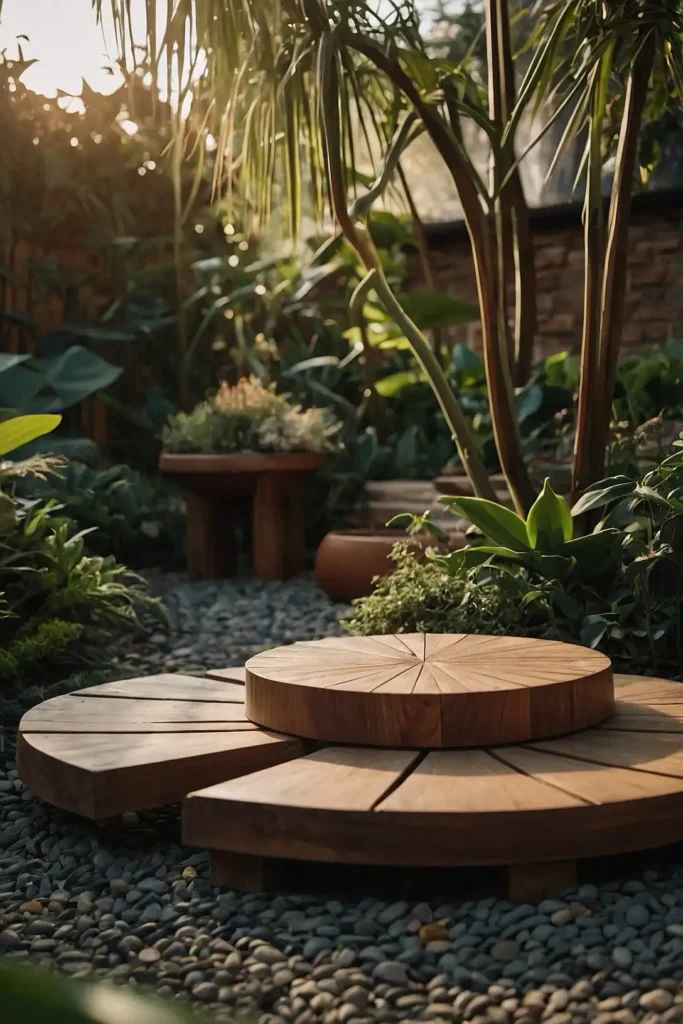
Create a dedicated seating area that supports proper meditation posture.
A flat stone, custom bench, or weather-resistant cushion gives you a consistent place to practice.
Position your seat to face an inspiring view or focal point in your garden.
Having a designated spot trains your mind to enter a meditative state more quickly when you sit there regularly.
14: Four Elements Representation
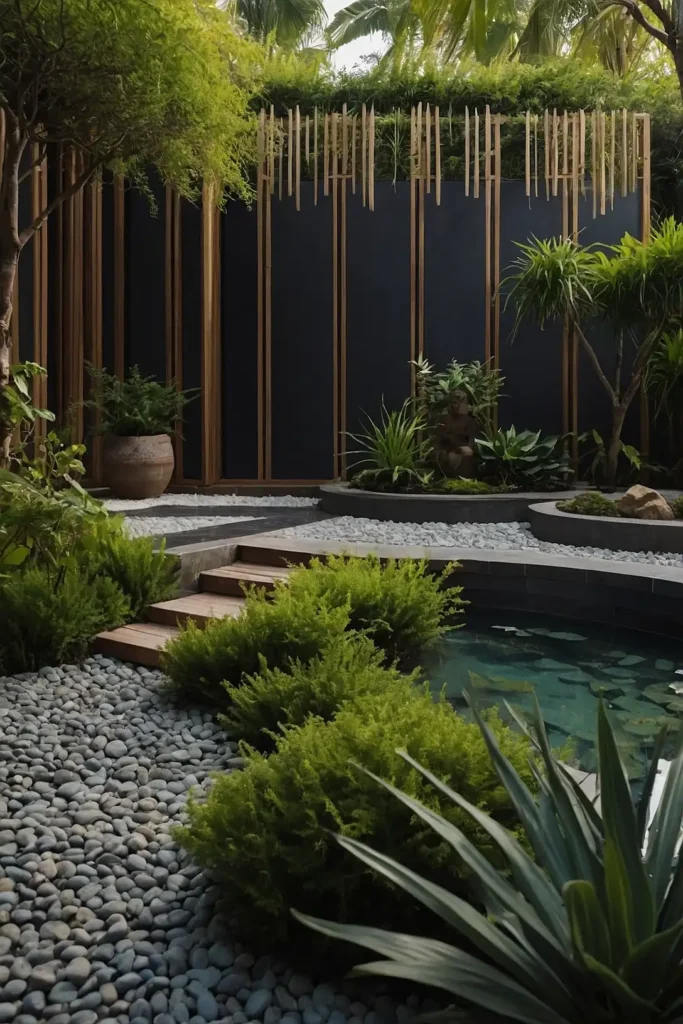
Incorporate representations of earth, water, fire, and air to create balance in your spiritual garden.
Use stones and plants for earth, a fountain for water, a fire pit or candles for fire, and wind chimes or tall grasses for air.
Arranging your garden with all four elements creates a complete energetic experience.
This ancient concept reminds you of the interconnection between all aspects of nature and yourself.
15: Divination Corner
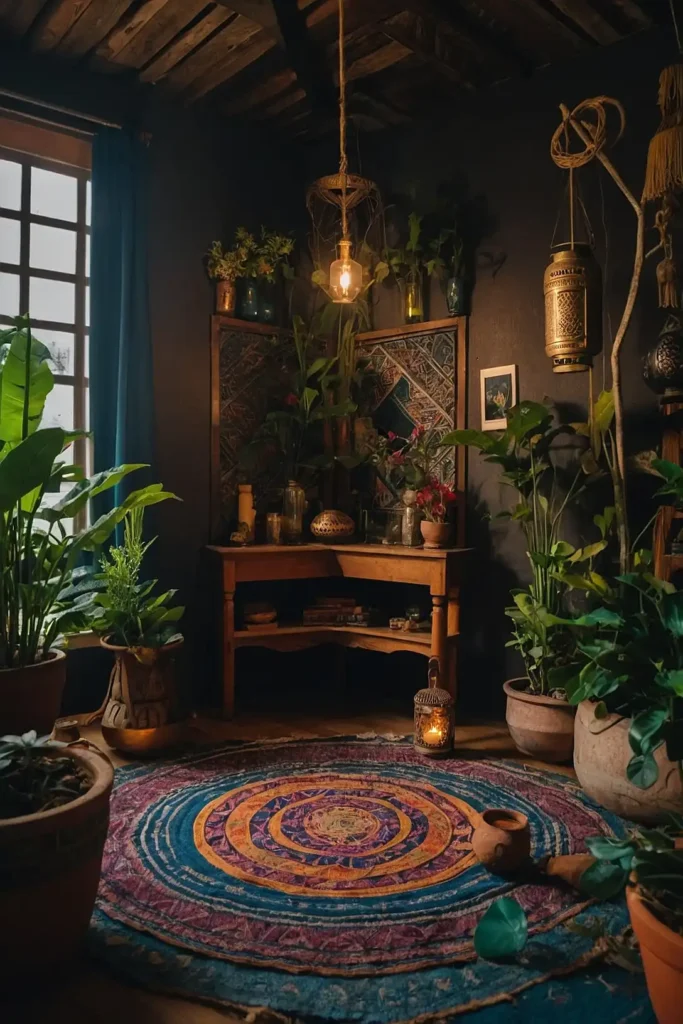
Dedicate a small area to divination practices like reading oracle cards or tea leaves.
A small weather-resistant table and chair tucked into a quiet corner creates the perfect spot.
Surround this area with protective plants like rosemary or sage.
This specialized space allows you to separate everyday meditation from deeper spiritual inquiry when you feel called to ask bigger questions.
16: Living Mandala Garden

Plant a circular garden in the form of a mandala using different colored flowers or herbs arranged in geometric patterns.
The concentric circles and symmetrical design create a living meditation tool.
Tend to your mandala garden as a form of active meditation.
The changing seasons will transform your mandala, teaching lessons about impermanence and the cycles of life.
17: Garden Art with Mantras

Incorporate your favorite spiritual quotes or mantras into garden art.
Engrave stones, create mosaic stepping stones, or hang weather-resistant plaques featuring words that inspire your practice.
Position these thoughtful reminders at eye level along paths or near seating areas.
The words will catch your attention during garden meditation, reinforcing your intentions and spiritual focus.
18: Crystal Garden Feature
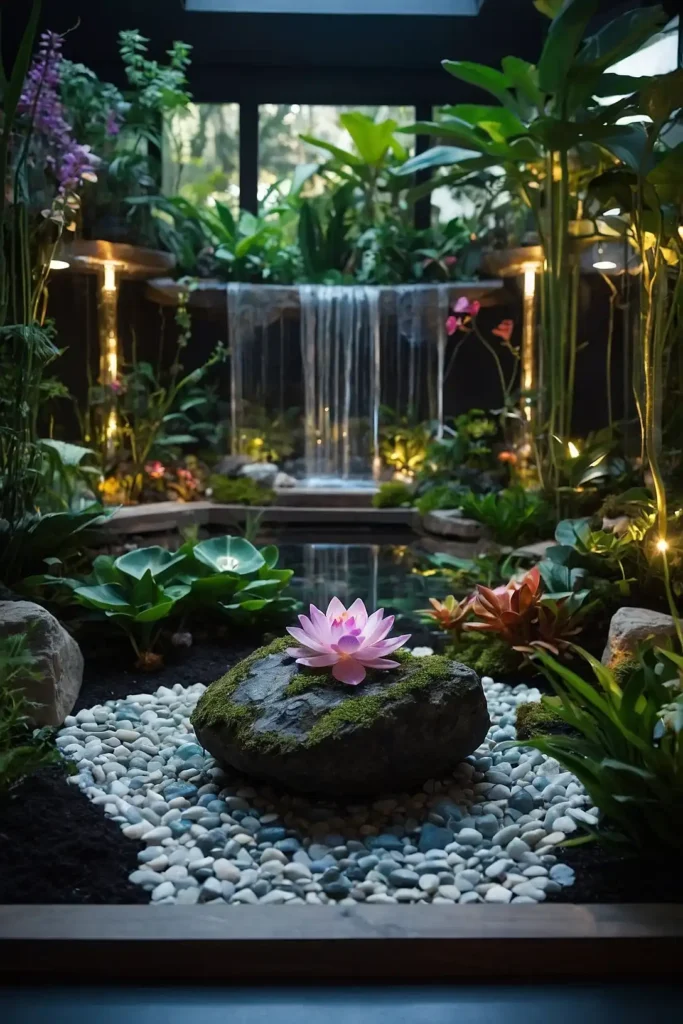
Arrange crystals among your plants to add both beauty and energetic properties to your meditation space.
Rose quartz promotes love, amethyst enhances spiritual awareness, and clear quartz amplifies energy.
Large specimens can serve as focal points, while smaller stones can be arranged in patterns.
Remember to occasionally cleanse your garden crystals by rinsing them in natural water or setting them in moonlight.
19: Wildlife-Friendly Elements
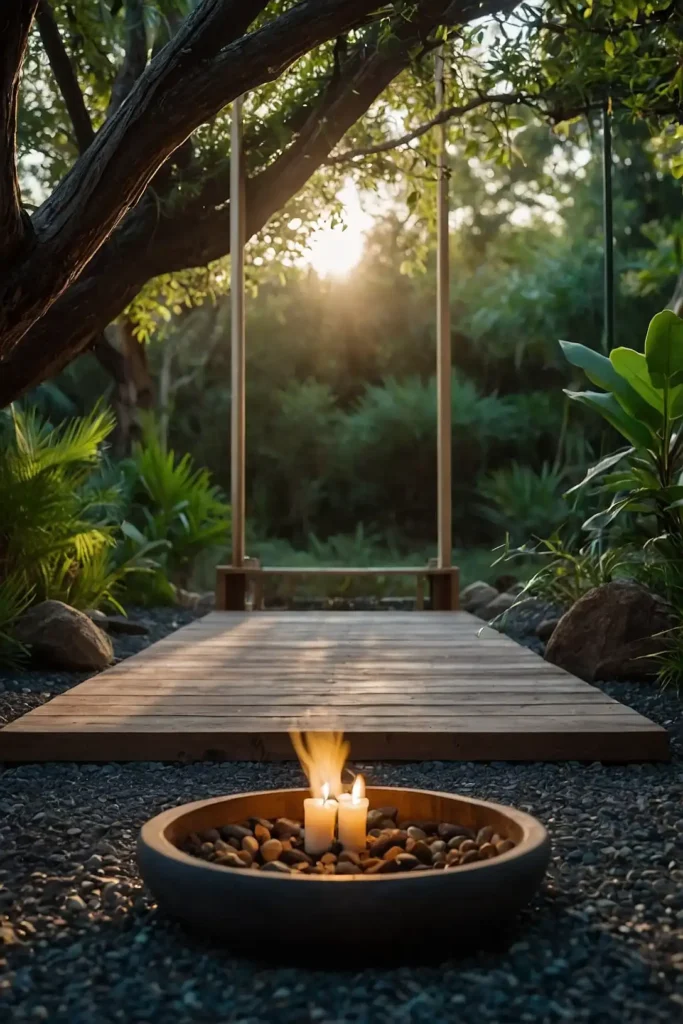
Attract birds, butterflies, and beneficial insects by including feeders, native flowering plants, and shallow water sources.
Observing wildlife interactions teaches presence and connection to the web of life.
The gentle movements and sounds of garden creatures provide natural points of focus during your meditation.
Their presence reminds you that your garden is part of a larger ecosystem.
20: Medicinal Herb Spiral
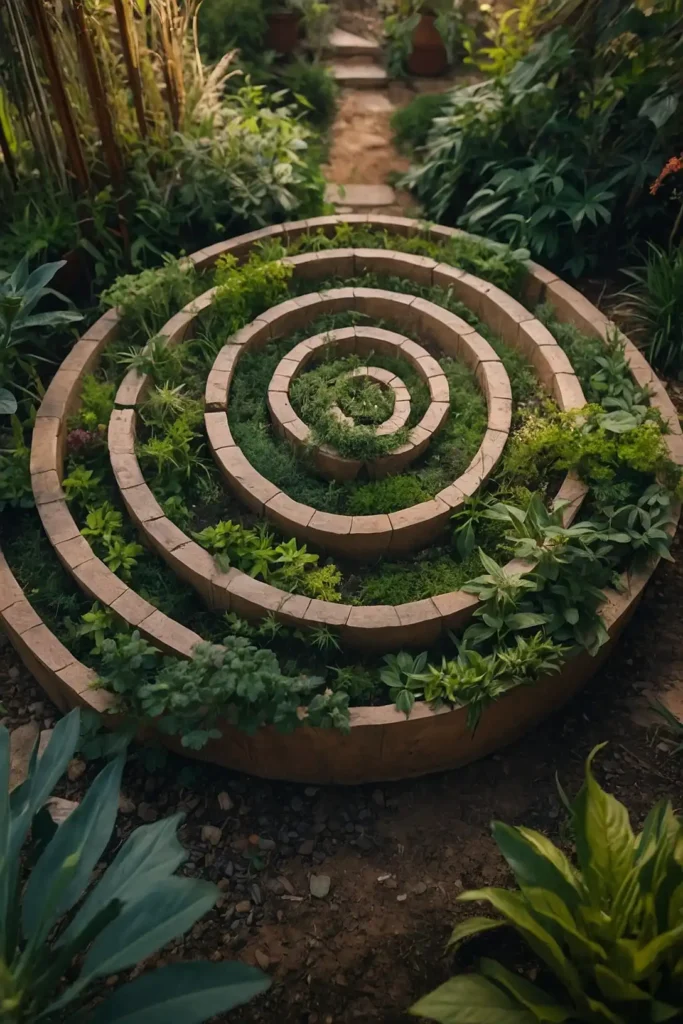
Build a spiral-shaped raised bed for growing medicinal herbs used in spiritual practices.
The spiral design maximizes space and creates different growing conditions for various plants.
Place plants needing the most sun and drainage at the top, with moisture-loving herbs at the bottom.
Harvesting and working with these plants connects you to ancient healing traditions and deepens your relationship with plant allies.
21: Barefoot Sensory Path
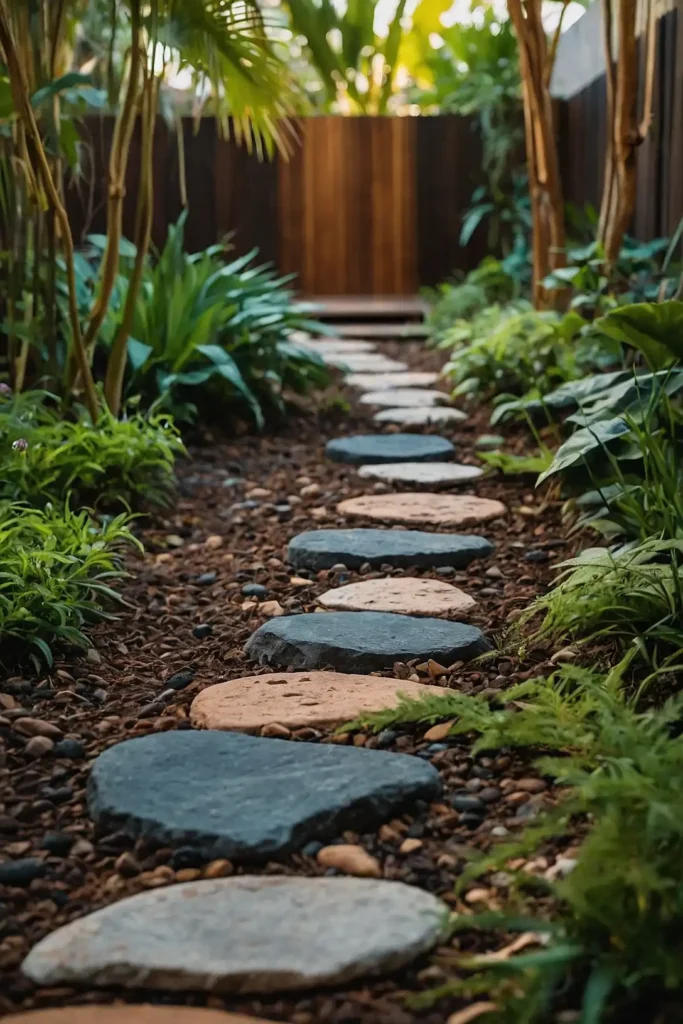
Create a short walking path with sections of different textures—smooth stones, soft moss, fine sand, and rounded pebbles.
Walking this path barefoot brings your awareness fully into your body through sensory stimulation.
This grounding practice helps you connect directly with the earth’s energy.
Even a small sensory path of just a few feet can become a powerful mindfulness tool when incorporated into your regular practice.
22: Sunrise/Sunset Orientation
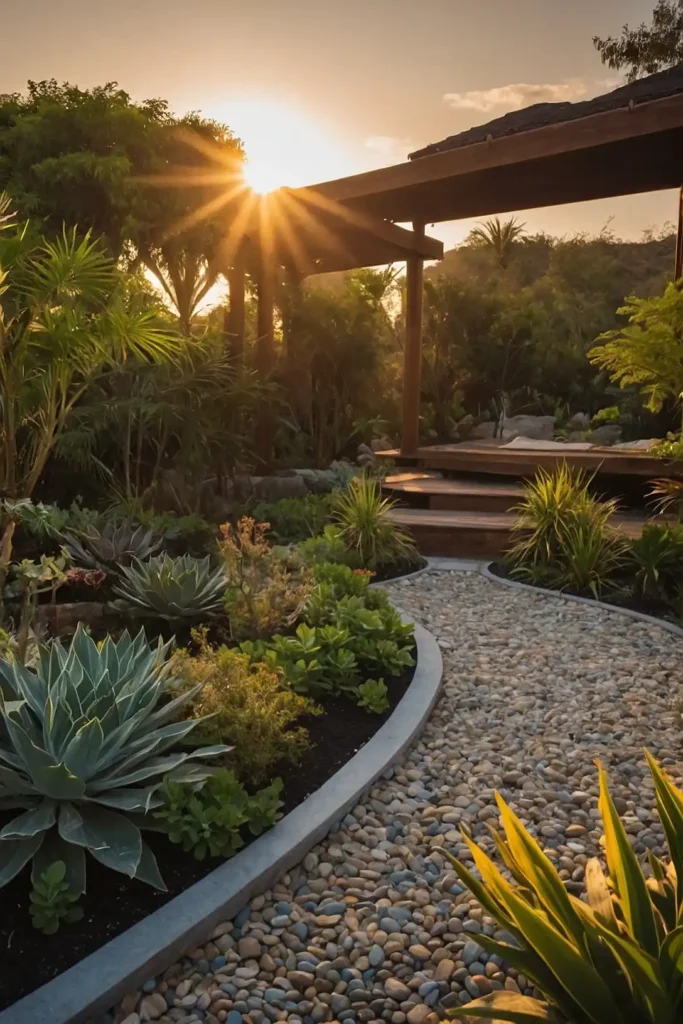
Design your meditation space to align with the rising or setting sun. Position seating to face east for morning meditation or west for evening reflection.
This alignment connects your practice to the natural rhythms of day and night.
The changing light conditions throughout the year will create subtle variations in your experience, keeping your practice fresh and aligned with seasonal energy.
23: Personal Symbol Integration

Incorporate symbols that hold special meaning in your spiritual practice—whether traditional religious symbols or personal totems.
These can be subtle elements within paving patterns or more prominent garden art.
Your personal symbols serve as touchstones during meditation, helping you connect with your deeper intentions.
Choose symbols that evoke the feeling states you wish to cultivate in your practice.
24: Sound-Dampening Barriers
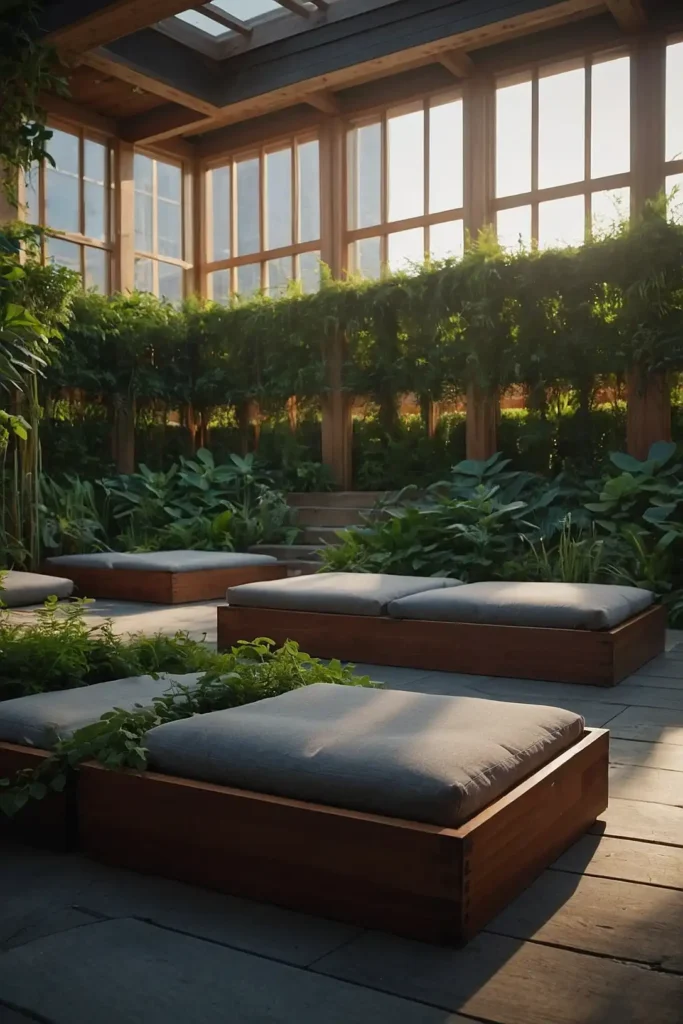
Plant dense hedges or install bamboo screens to reduce noise pollution and create a sense of sanctuary.
The more you can minimize urban noise, the easier you’ll find it to drop into deep meditation.
These barriers also provide privacy from neighbors, allowing you more freedom in your practice.
Choose evergreen varieties for year-round screening or deciduous plants if you prefer seasonal changes.
25: Dedicated Gratitude Tree
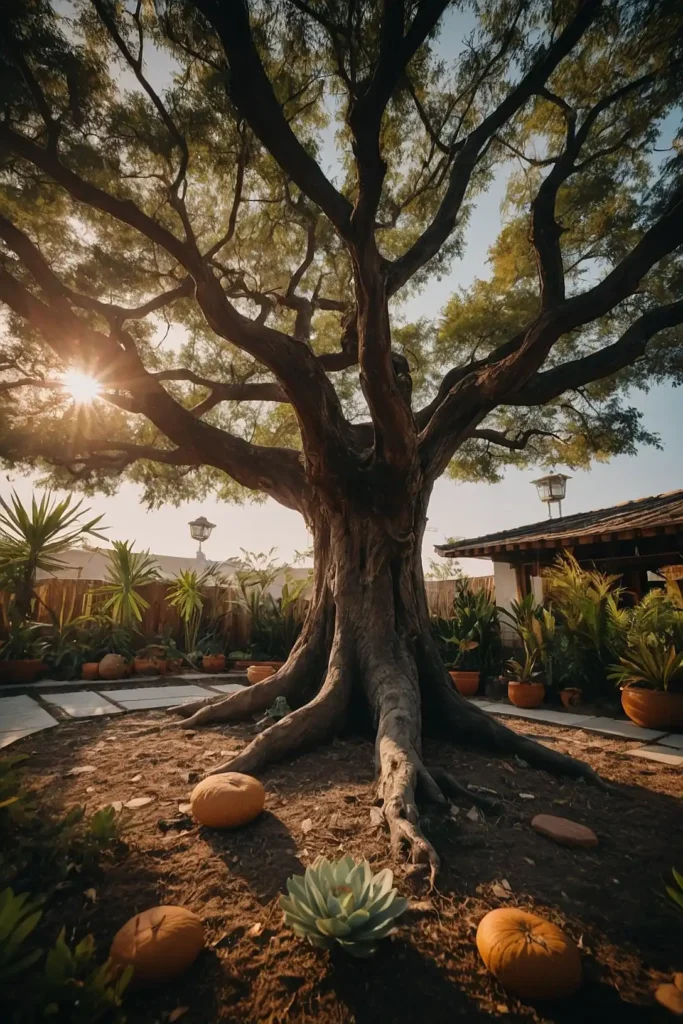
Plant a special tree that becomes your “gratitude tree” where you can hang small notes of appreciation or prayer ties.
Choose a species with special meaning to you or one known for longevity.
Visit this tree regularly as part of your practice, perhaps adding new gratitude notes during full moons or significant dates.
Over time, your tree becomes a living record of your spiritual journey.
26: Rain Collection Feature

Install a decorative rain chain or basin to celebrate water as a precious resource.
The sound of rain collecting becomes nature’s music during meditation sessions on wet days.
This feature reminds you of life’s cycles and the importance of receptivity in spiritual practice.
Position it where you can observe water flowing during rainstorms without getting wet yourself.
27: Transitional Gateway
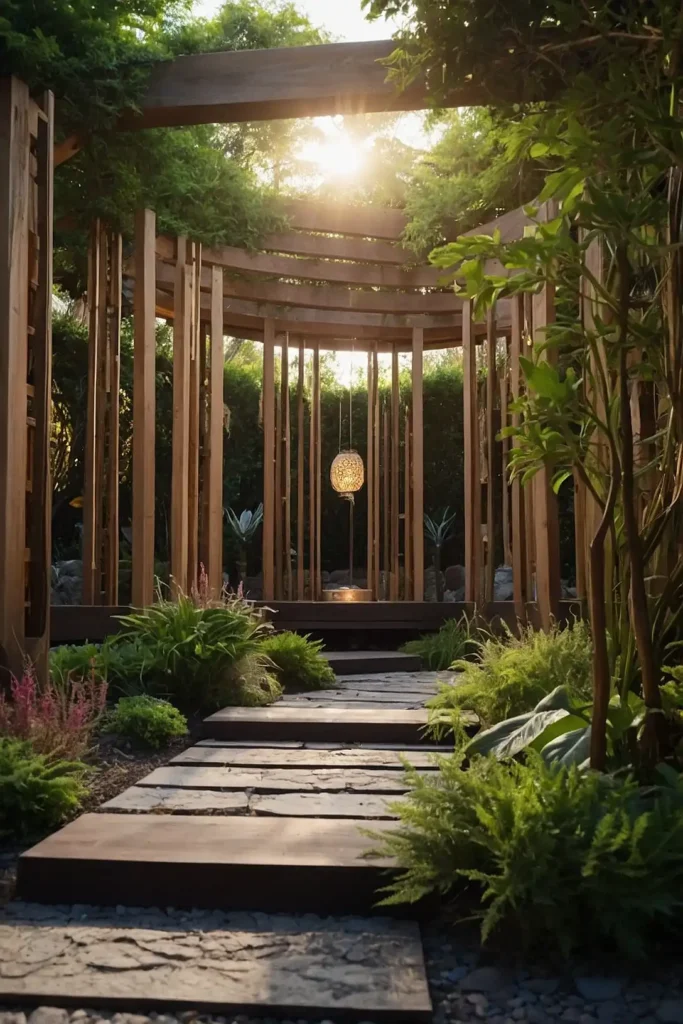
Create a distinct entrance to your meditation garden using an arbor, gate, or simple stone markers.
This threshold helps you mentally transition from everyday concerns to spiritual practice.
Develop a small ritual for entering your space, such as ringing a bell or taking three conscious breaths.
The gateway becomes both physical and psychological preparation for the sacred time you’ll spend in your garden.
Conclusion
Your spiritual garden doesn’t need to include all these elements—choose what resonates with your practice and space.
Start small, add mindfully, and let your garden evolve alongside your spiritual journey.

